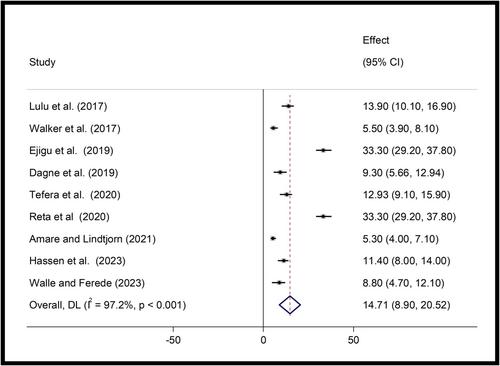Prevalence and Determinants of Scabies Among Schoolchildren in Ethiopia: A Systematic Review and Meta-Analysis
Abstract
Background and Aims
In deprived and poor communities worldwide, scabies remains an overlooked tropical disease. Numerous individual studies have been conducted in Ethiopia on this issue, demonstrating notable disparities and inconclusive findings. This systematic review and meta-analysis aimed to establish Ethiopia's pooled scabies prevalence and determinants among schoolchildren.
Methods
Studies were retrieved from PubMed, Scopus, Science Direct, Google Scholar, and African Journals Online through a systematic search. The Joanna Briggs Institute's critical appraisal tool was employed to assess the quality of observational studies (cross-sectional and case-control). The meta-analysis was performed using Stata software version 14 and its metan command. A forest plot was used with a random effects model to calculate the pooled prevalence and its 95% confidence interval (CI). Subgroup and sensitivity analyses were employed to evaluate potential sources of heterogeneity. The funnel plot and Egger's test were used to evaluate publication bias, while heterogeneity was assessed using inverse variance (I2).
Results
In this systematic review and meta-analysis, 14.71% (733/5104) of schoolchildren had scabies, with a 95% CI of 8.90%−20.52%. The highest prevalence is recorded in the Amhara region (17.09%; 95% CI: 2.15–32.04), and the lower prevalence is seen in the Oromia region (12.52%; 95% CI: 10.08–14.95). Children sharing clothes with scabies cases, using common sleeping beds/fomites, having a family history of scabies, and having illiterate parents are significantly associated with scabies among Ethiopian schoolchildren (based on adjusted odds ratios: 7.07; 95% CI: 1.55–12.59, 2.13; 95% CI: 0.04–4.22, 1.45; 95% CI: 0.35–3.94, 1.42; 95% CI: 0.94–0.89).
Conclusion
The current prevalence of scabies ranges from 12.52% to 17.09% and is higher in the Amhara region. The national policymakers and health planners should prioritize implementing prevention and control measures of scabies among schoolchildren through ivermectin-based mass drug administration for three to five rounds annually until the prevalence is less than 2%.


 求助内容:
求助内容: 应助结果提醒方式:
应助结果提醒方式:


